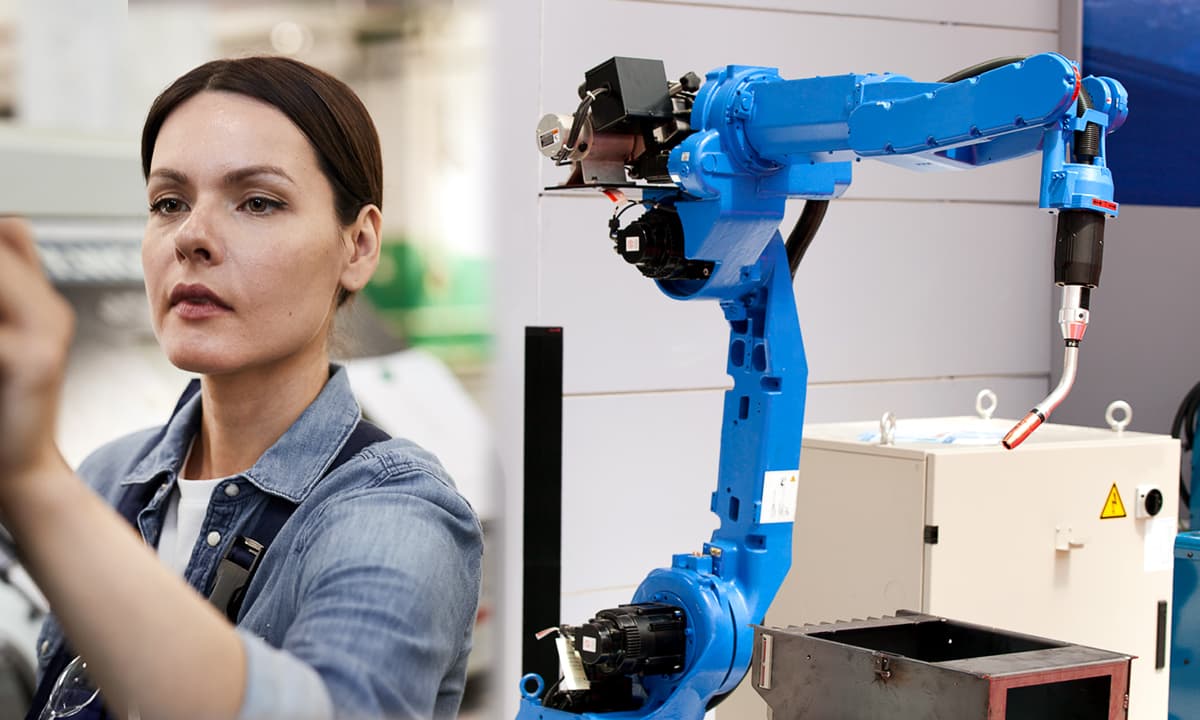
Offline programming is a newer method for programming robots in metal manufacturing. Robot programs can be created and tested on a computer before real robots are used. Check out this article because it offers insights into how offline programming enhances teamwork and accuracy in metal fabrication.
The main benefit is it saves time. You would have to program robots on the factory floor, which takes a long time. With offline programming, you program on a computer without stopping production.
Engineers use special software to make complex paths for robots. They set things like speed, starts and stops, and avoiding crashes. If the factory needs to make changes, engineers update the programs on the computer without stopping work on the floor.
This is useful in metal manufacturing, which uses welding, cutting, and bending robots. It helps meet quality needs while doing complex metal fabrication tasks. Overall, offline programming connects virtual design to real-world execution. It makes production more efficient, optimizes robot movements, reduces downtime, and allows quick changes. For metal makers wanting to stay competitive, it is a must-have tool.
How Offline Programming Helps Metal Fabrication
Offline programming has revolutionized metal fabrication programming. Before, programming was done on the machine, which took time and could cause errors. But offline programming is all done on a computer away from the machine.
This saves time, reduces errors, and improves production. A big benefit is engineers make and test programs without stopping the machines. With old methods, any program changes meant stopping work and wasting time and materials.
Offline programming avoids this by letting programmers test options in a virtual environment without affecting real work. It also gives a safer space for programmers, away from heavy machines while testing. They work on a computer with special design software.
It connects the design and programming teams better. With old methods, these groups communicated little. However, offline programming lets them collaborate with ease through shared digital files.
It improves accuracy by letting them simulate the work before doing it live, which catches issues early when they are easier to fix. By testing virtually first, they reduce expensive real-world mistakes.
Overall, offline programming gives flexible and safe ways to program away from the factory floor. Its accuracy and teamwork benefits empower metal fabricators to do their best work. As technology improves, it will become even more essential in this industry.
Virtual Testing
A major plus of offline programming is virtual testing. Simulating the process on a computer identifies problems before real production—saving time and materials.
In metalwork, virtual testing evaluates many key points. First, it checks if a design will work well by looking at part fit, collisions, and other factors. Engineers make changes as needed to improve it.
It also optimizes machining plans. Programmers try different cutting paths, speeds, etc., without using real machines. Powerful computers and algorithms help find the best methods for quality and speed.
Virtual testing validates that production plans meet standards before attempting them. Cycle times, quality measures, and efficiency numbers are analyzed. Improvements are made if needed.
It also promotes teamwork among different groups involved. Designers, engineers, and machine operators see the virtual process and provide input, which gets all viewpoints without needing to be in one place.
Virtual testing gives metal fabricators many rewards. It assesses designs, optimizes machining, validates plans, and enables collaboration. By using simulations and algorithms, uncertainties are reduced for smoother production.
3D Rendering
3D rendering is an invaluable offline programming tool. It lets programmers see three-dimensional product views before production starts. This comprehensive understanding prevents issues. To summarize, renderings:
- Identify flaws in early design stages through detailed visuals of all features. Problems are fixed right away, saving time later.
- Allow flexible design changes. Modifications are easy on-screen versus after production begins. Programmers try different options to pick the optimal version.
- Promote teamwork. Visual models help designers explain concepts to clients and non-technical colleagues. This alignment improves decision-making.
In metal fabrication, 3D rendering has revolutionized product creation. Design issues get addressed early while allowing iteration without disrupting ongoing work. It also enhances stakeholder communication and collaboration. Overall, renderings help fabricators deliver high-quality products.
In Sum
Offline programming is a game-changer for metal manufacturing. Virtual simulations optimize programs without stopping real production, which identifies potential problems and reduces costly mistakes before they happen.
3D renderings also visualize the full process for accuracy. Offline programming saves time and resources while focusing on production rather than programming. Trial-and-error and prototypes are minimized through computer modeling.
Looking forward, offline programming has huge potential to increase efficiency, lower costs, and improve safety as it expands in metal fabrication. The ability to program robots remotely using virtual tools has led to greater precision and productivity.
With advantages like virtual testing and rendering, offline programming sets the stage for metal manufacturing to reach new heights of quality and efficiency. It has transformed fabrication from manual labor to advanced technology.